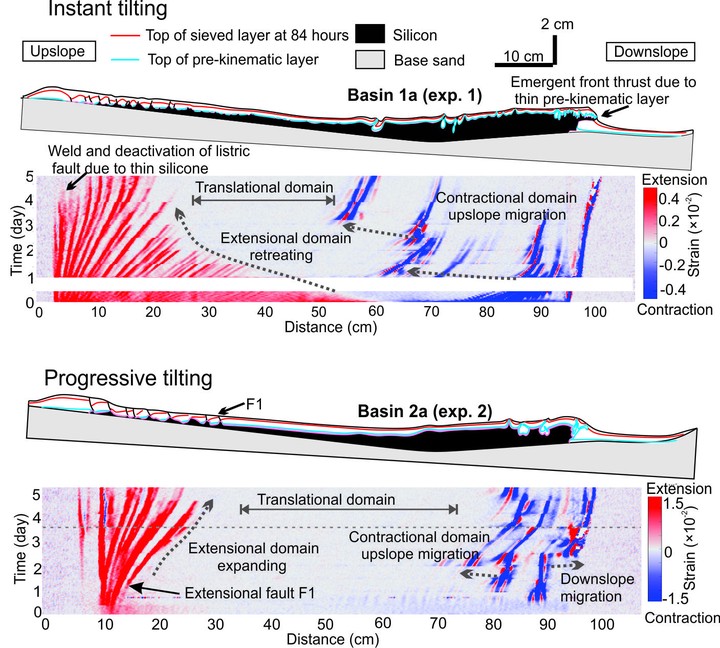 Strain evolution of the sandbox model
Strain evolution of the sandbox model摘要
As a main driving mechanism, margin tilting is crucial for gravitational thin-skinned salt tectonics. We investigate how instant versus progressive margin tilting influence salt tectonics using an analogue modelling setup where tilting rate can be controlled. Instant tilting results in initially high deformation rates triggering widely distributed upslope extension and downslope contraction. Later, both the extensional and contractional domains migrate upslope as early extensional structures are successively deactivated, while deformation rates decrease exponentially. In contrast, progressive tilting leads to downslope migration of the extensional domain by sequentially formed, long-lived normal faults. Contraction structures initially occur across a wide downslope area, and subsequently become localized on a few, long-lived thrusts. We attribute the distinct differences in structural evolution between the two tilting scenarios to mechanical coupling between the brittle overburden and underlying viscous material controlled by the deformation rate. By demonstrating the spatiotemporal variations of structural style and kinematic evolution associated with instant versus progressive tilting, we suggest that such variation is identifiable in subsurface datasets and therefore can provide a new way to constrain and analyse margin tilting histories.
Supplementary data can be downloaded here, including data and code.